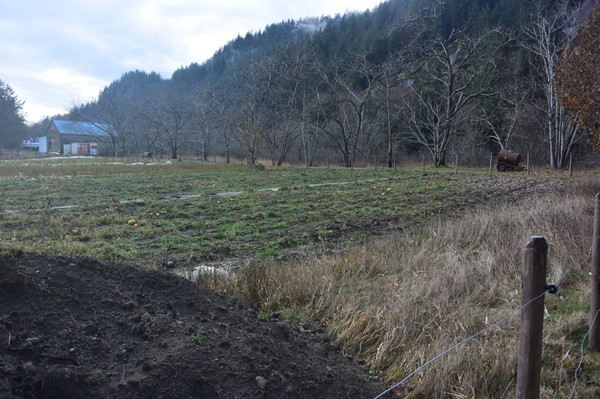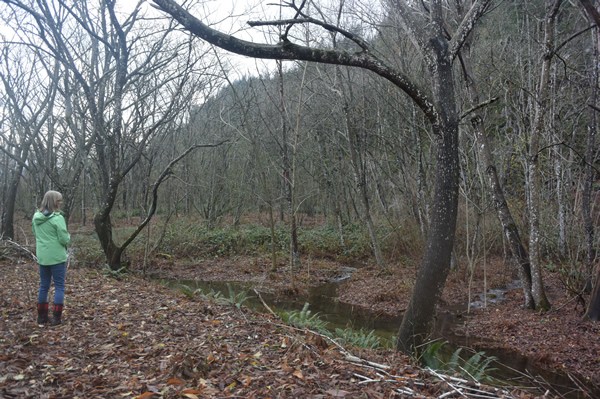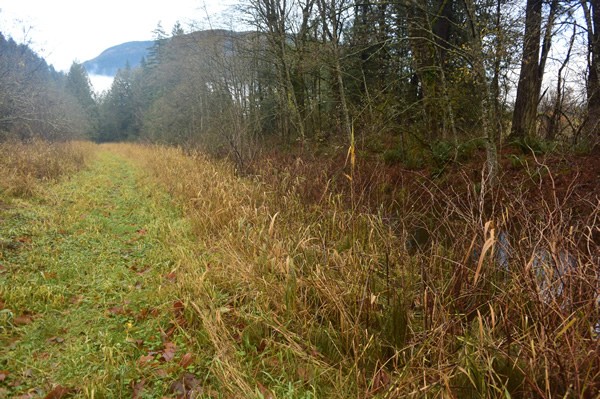











Site Description
Name of the site: Earthwise Agassiz
Address: Lower Mainland | Agassiz
Size: 57 acres
Type of crops: Organic demonstration farm
Owned property for: 3 years
“Our mandate has always been environmental education and trying to get people to make the right choices about land care.”
~ Earthwise executive director, Patricia Fleming
Stewardship Practices Guides
The following guides are relevant to this project site
- Riparian Areas in Settled Landscapes
- Guidance for Restoration Activities in Riparian Areas
- Drainage Maintenance in Agricultural Waterways
Click to download the table for stewardship practices at the Earthwise Agassiz site.
Stewardship project partner
Fraser Valley Conservancy
District of Kent
Mike Pearson
Project Overview
Surrounded by steep forested cliffs and bounded by two rivers, Earthwise Agassiz is a sustainable demonstration farm focused on land stewardship. The farm was recently donated to the Earthwise Society, a Delta based, community focused environmental education NGO (www.earthwisesociety.bc.ca). Patricia Fleming, the executive director of Earthwise, explains how they received the land and the opportunities it has provided:
[The land] was donated to us, it was a fantastic opportunity. It allows us to build on the experience that we have doing environmental education related to ecological land management, and to expand in a way that was simply not possible before.
The Agassiz property allowed the Earthwise Society to recreate and expand their demonstration initiatives focused on homeownership and agriculture. Patricia describes their demonstration ecological garden aimed at homeowners:
We’re in the process of developing a demonstration ecological garden that’s focused more on homeowners and encouraging people to make the right decision about how they plant, what they plant, and how they prepare their soil, and how they treat their plants. That was our first area of education and involvement.
Earthwise’s demonstration farm is aimed at young people interested in the potential of small-scale sustainable agriculture. Earthwise Society’s first organic demonstration farm was started in 2008 at their Delta location and has continued and grown at their new Agassiz site. The farm produces certified organic crops such as winter squash, onions, kale, and tomatoes to showcase the potential of small-scale organic agriculture.
We initiated our small scale demonstration farm in 2008 as a model for young people who are seeking entry into farming. Our farms show how even just one or two acres can be very productive with careful planning and land stewardship and it’s possible to make a viable living off a very small area.
As part of demonstrating the viability of sustainable agriculture, Earthwise plans to complete substantial restoration work in the riparian and aquatic areas around the farm. Patricia is particularly enthusiastic about the many types of ecosystems on the property and the potential for showcasing different treatments for restoring streams.
I’m really excited as the farm allows us to show different types of treatments for streams that flow through the property and different types of ecosystems that are threatened and endangered. We will [also] improve the habitat value [and area] of the wetland.
Earthwise has started their work on their Agassiz property by planting “native vegetation for pollinators,” and engaging the community to help remove invasive species. Patricia describes focusing on invasive species that are easier to remove, such as Himalayan Balsam, when first engaging the community. This provides community members with positive experiences before moving onto more difficult invasive species such as Himalayan Blackberry or Reed Canary Grass.
We were focusing on [Himalayan Balsam] this year because it is the easiest. What we’re trying to do is engage the community. We wanted to give people a positive result to start with and not so that they go away and say: “Oh I’m never going there again.”
Key Stewardship Practices:
- Protect riparian areas
- Remove invasive species
- Restore aquatic habitats
Champion
Motivation
Earthwise’s primary focuses are environmental education and ecological land management. Earthwise started as a small community driven environmental group in 1979 focused on recycling. Since then, Earthwise has grown and now advises gardeners and farmers on land care and stewardship practices.
Our mandate has always been environmental education and trying to get people to make the right choices about land care.
Patricia describes Earthwise’s aims to raise awareness regarding the value of organic certification and to become a community resource for people across the Lower Mainland. She hopes that by providing this resource people will better understand the value of agriculture.
We are certified organic because we also wanted to help raise awareness amongst consumers about what that means, what it means to be organic, and why we made that choice. We want it to be a community resource a community asset and a destination learning resource that would serve not just the eastern Fraser Valley but also be an attraction for people coming up from Vancouver. We want to have a demonstration farm where people come and learn about how food is grown and maybe get a better understanding of the value of agriculture to their community and economy.
Future challenges and outcomes
Patricia foresees long-term maintenance of projects as a potential future challenge. She explains that it is relatively easy to complete initial planting of native plants but the follow-up work of clearing out invasive species can be more difficult.
It’s easy to get people to do the initial planting but it’s not so much fun to go out and say: “Hey how you like to come do this again cause all those invasives have grown in again?”
In the future, Earthwise Agassiz will focus on completing projects that increase the resiliency of the land and contribute to long-term sustainability. Patricia describes this long-term goal:
We think that the long-term outcomes have to do with improving ecosystem functions strengthening the health of ecosystems. I think that it’s important for everybody to do what they can to enhance ecosystems because that ultimately leads to resiliency and if we’re going to have long-term sustainability that’s what we want to do.
Stewardship Practices Menu
Learn more about Species at Risk
Stewardship Practices Case Studies
Fraser Valley & Lower Mainland Sites
Kootenay Sites
Okanagan Sites
Vancouver Island Sites
Contact Information
Find us on social media
LinkedIn: @StewardshipCentreBC YouTube: @stewardshipcentreforbc1047 Instagram: @StewardshipBC
